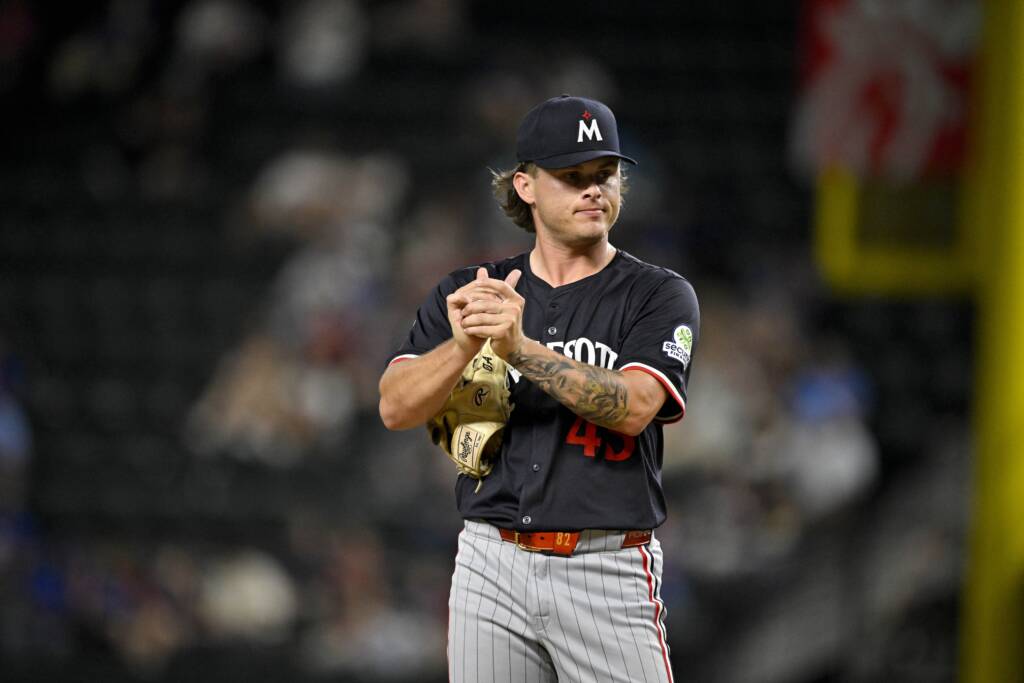Brooks Lee grew up in San Luis Obispo, a city of 50,000 people halfway between Los Angeles and San Francisco. It’s an oasis in the desert, 10 to 20 minutes away from the ocean with vineyards and a botanical garden. There are peaks to climb and parks to explore, art galleries to marvel at, and a drive-in theater.
People call it SLO. Life is good there, might as well savor it.
There’s some irony, then, that Lee is trying to speed things up.
Lee fell to the Minnesota Twins as a pre-packaged hitter at No. 8 in the 2022 draft. He had played for his father, Larry, the longtime head coach at California Polytechnic State University in San Luis Obispo. After years of training at Cal Poly and a personal facility, he entered the minors with a major-league-ready bat.
“The Twins should expect a 23-year-old switch-hitter who will give very professional and competitive at-bats from the minute he steps into the box for the first time,” wrote MLB.com’s Jonathan Mayo when Minnesota called Lee up in 2024.
Lee delivered on that promise immediately, hitting .300/.341/.475 in his first ten games. “It’s hard to think that someone could come to the big leagues and look more comfortable than he’s looked,” Rocco Baldelli said.
However, Lee experienced discomfort in his shoulder as the season progressed and developed biceps tendinitis in August. He ended his rookie season unsatisfied with his results. Lee hit .178/.200/.301 in the final month of the season and finished the year with a .221/.265/.320 slash line.
“I always hammer fastballs,” Lee said at spring training this year. “My whole life. Last year was the first time I never hit a fastball. It makes it pretty difficult to hit. … I happened to fail after being on top of the world for two weeks. It sucked.”
Lee has experienced similar highs and lows this year. He had a 25-game hit streak from May 28 to June 20 and slashed .348/.375/.533 in June. However, Lee missed the first part of the season with a back injury, hit .219/.236/.305 in May, and .132/.150/.158 in July before the All-Star Break.
He’s started to make adjustments at the plate quicker and matured as a hitter. However, Lee, 24, is still developing as a player. He spends most of his time working on hitting fastballs in the cage, knowing he can adjust his swing for a slider in real-time and identify the other off-speed pitches.
“I mean, I just didn’t have the swing for it last year,” Lee said in May. “When you’re looking for a fastball, and granted, a lot of guys don’t throw it anymore, but still trying for fastball timing.
“When you do end up getting that pitch and you don’t get it, I think that’s more frustrating than anything, which can lead to not being able to separate for the next pitch because you missed your pitch. It’s been different this year.”
Lee feels he’s at his best when he’s hitting well enough to dismiss outlier results as bad luck. Sometimes, batters will drive a hard-hit ball right at an infielder, or an outfielder will rob them of a home run.
During his 25-game hit streak, Lee could more easily move on from a lousy outcome. It’s more challenging to do that during a slump.
He also has good contact skills, but is focused on ensuring he’s offering at pitches he can drive.
“My whole career, I want to make contact early [in the count], but I’ve done a better job with the quality of contact,” he said earlier this year. “I think anybody can just tap the ball, which is what I did last year. That’s not going to last.”
Lee has shown everyone he can be the elite hitter that experts projected him to be coming out of college. His next step is to do so consistently. It starts with hitting the fastball, because once he can time up the heater, he can slow everything down and give everyone something to savor.

